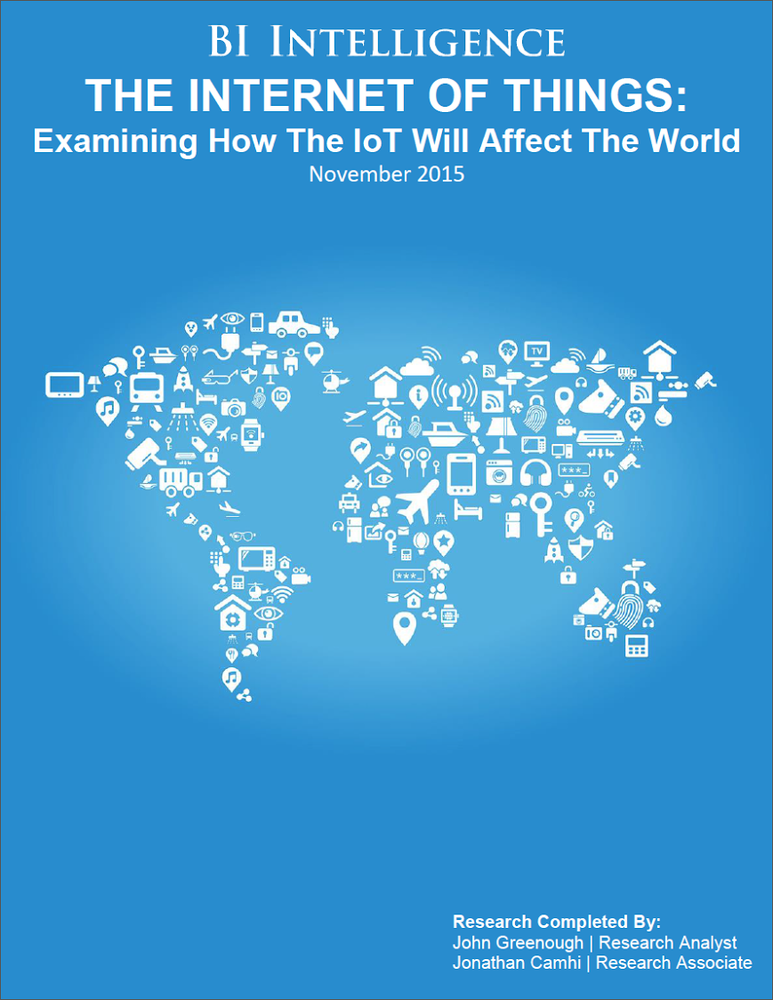it will change the way all businesses, governments, and consumers interact with the physical world.
 For more than two years, BI Intelligence has closely tracked the growth of the IoT. Specifically, we've analyzed how the IoT ecosystem enables entities (i.e. consumers, businesses, and governments) to connect to, and control, their IoT devices in 16 environments, including manufacturing, the connected home, transportation, and agriculture.
For more than two years, BI Intelligence has closely tracked the growth of the IoT. Specifically, we've analyzed how the IoT ecosystem enables entities (i.e. consumers, businesses, and governments) to connect to, and control, their IoT devices in 16 environments, including manufacturing, the connected home, transportation, and agriculture.
In a new report from BI Intelligence, we discuss all of the components of the IoT ecosystem, including its devices, analytics, networks, and security. We also provide estimates and forecasts on the burgeoning IoT market, including device growth, amount invested, and potential return on investment.
Here are some key points from the report:
In total, we project there will be 34 billion devices connected to the internet by 2020, up from 10 billion in 2015. IoT devices will account for 24 billion, while traditional computing devices (e.g. smartphones, tablets, smartwatches, etc.) will comprise 10 billion.
Nearly $6 trillion will be spent on IoT solutions over the next five years.
Businesses will be the top adopter of IoT solutions. They see three ways the IoT can improve their bottom line by 1) lowering operating costs; 2) increasing productivity; and 3) expanding to new markets or developing new product offerings.
Governments are focused on increasing productivity, decreasing costs, and improving their citizens’ quality of life. We believe they will be the second-largest adopters of IoT ecosystems.
Consumers will lag behind businesses and governments in IoT adoption. Still, they will purchase a massive number of devices and invest a significant amount of money in IoT ecosystems.
In full, the report:
Distills the technological complexities of the Internet of Things into a single ecosystem
Explains the benefits and shortcomings of many networks, including mesh (e.g. ZigBee, Z-Wave, etc.), cellular (e.g. 3G/4G, Sigfox, etc.), and internet networks (e.g. Wi-Fi, Ethernet, etc.)
Discusses analytics systems, including edge analytics, cloud analytics, and more
Examines IoT security best practices
Details the four IoT market drivers and four IoT market barriers
Forecasts IoT investment by six layers: connectivity, security, data storage, system integration, device hardware, and application development
Analyzes how the IoT ecosystem is being using in a number of industries
Defines Internet of Things terminology within a glossary
No comments:
Post a Comment